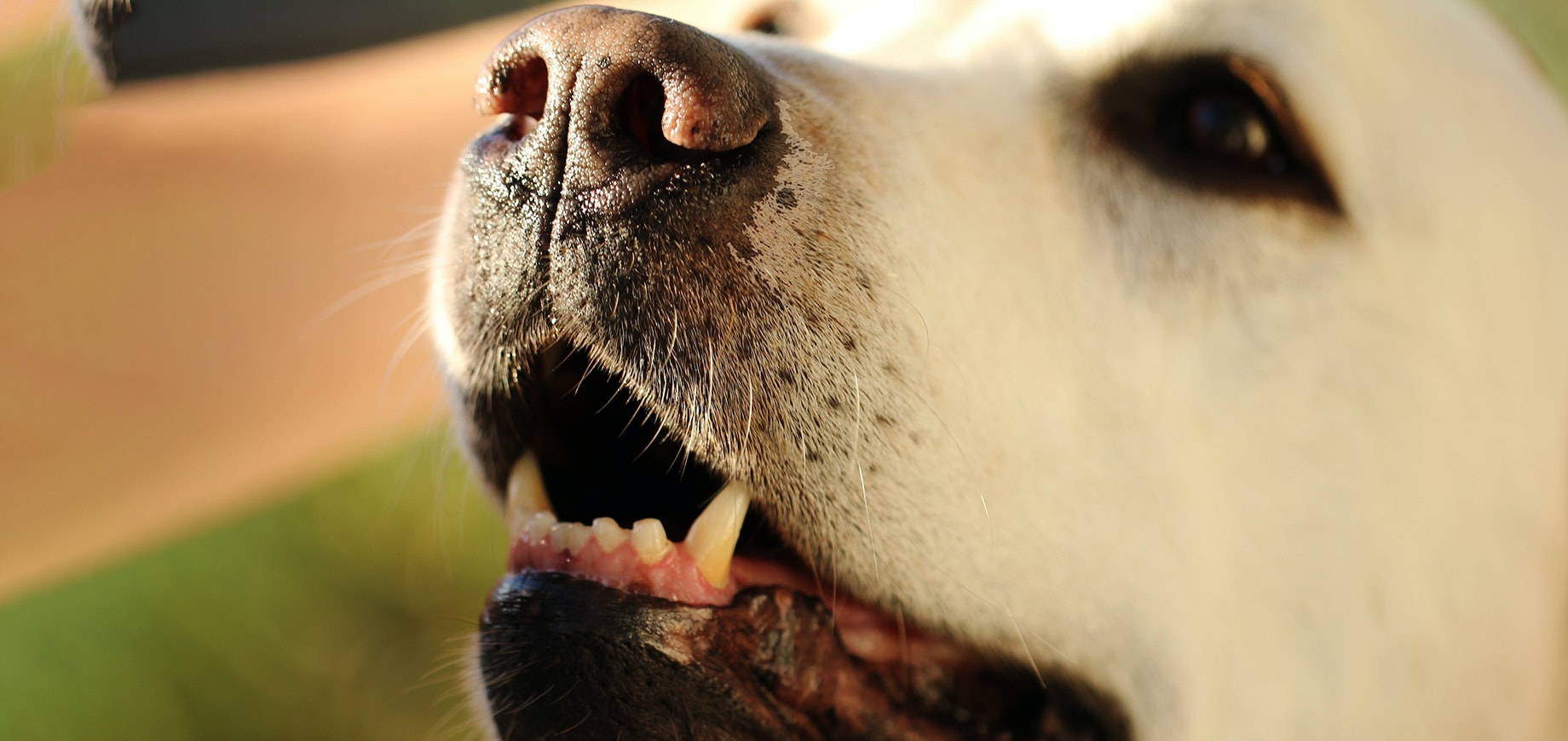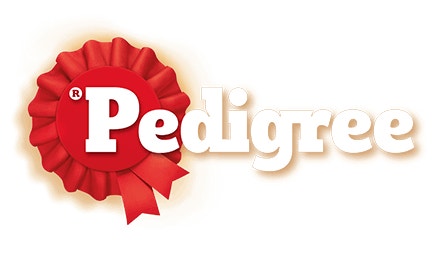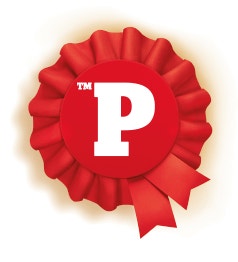

We love seeing a happy dog’s face - but it’s a little less sightly when their teeth are stained brown. Like humans, dogs can also suffer from plaque and tartar on their teeth. If this builds up, you’ll notice bad breath and signs of gum disease, which left untreated can lead to health issues for your dog.
In this article, we explain what dog plaque and tartar is and why it’s harmful. We also discuss dog plaque removal to help maintain their oral hygiene, as well as when to see a veterinarian for more severe cases. It’s important for owners to look after their dog’s dental health, just as they would their own, in order to protect them from potential health problems.
Dog plaque is an off-white and sticky substance that can be found on your dog’s teeth. It’s formed when bacteria, saliva, food particles and minerals combine together to create a layer on the surface. You can remove plaque from a dog’s teeth if you’re brushing them daily.
However, if it’s not properly removed, plaque can harden to form tartar within as little as a few days. Tartar on your dog’s teeth is a yellow/brown, rough layer that adheres firmly to the surface, and can appear near their gum line. It is much more difficult to remove tartar from your dog’s teeth.
A buildup of plaque and tartar on a dog’s teeth can escalate into other dental issues for your dog, and we expand on the potential problems below. If you’re looking to understand your dog’s teeth better first, our article can help you.
Plaque and tartar on dog teeth can be harmful as it can lead to other dental problems. When plaque and tartar accumulate on the surface of the tooth at the gum line, the bacteria inflames their gums and can quickly progress to gingivitis. This can cause your dog’s gums to become red, swollen and sensitive, causing bleeding and bad breath. Gingivitis can also escalate to gum disease in dogs, and if left untreated will lead to erosion of the gums and surrounding structures, which can result in tooth loss.
There is also a risk of abscesses forming, which are infections around the tooth roots that can be painful for your dog. It’s important for dog owners to maintain a dental care routine to remove dog plaque from their teeth and prevent other dental issues from occurring.
You’ll know if your dog has plaque if you check their teeth and can see the accumulation of plaque (off-white, sticky substance) or tartar (yellow/brown, rough layer) on the outside of their teeth and near their gum line. You may also notice bad breath or red and swollen gums.
It’s important to look out for signs of plaque or tartar buildup on your dog’s teeth in order to keep your dog’s teeth and gums healthy. While discoloured teeth in itself may seem minor, not removing plaque or tartar from your dog’s teeth may lead to other dental issues which can be more serious.
Here are the 5 common symptoms of plaque and tartar buildup in dogs:
However, dogs are stoic animals and as such hide oral pain, so you’ll need to look out for more subtle signs such as:
You may be able to remove thick plaque from your dog’s teeth by brushing their teeth regularly, using dental chews and providing dental toys. However, once the plaque has hardened and become tartar, you will need to have your dog’s teeth professionally cleaned.
Besides our do’s and don’ts on dental care for dogs for you to consider, we have also provided further suggestions on dog plaque and tartar removal below.
Brushing your dog’s teeth regularly is the best way to look after their teeth, however, it should be introduced gradually to your dog. Before beginning this routine, you can start getting your dog used to you handling their mouth by gently stroking their face and rewarding them with treats.
When your dog is ready, you should only use a dog toothbrush and dog-safe toothpaste to brush their teeth, as human toothpaste has ingredients which are toxic to dogs. Allow some time for your dog to become familiar with the texture of the brush and the taste of the toothpaste.
To make the routine easier for yourself, you should choose a time when your dog is most relaxed to brush their teeth as you’ll face the least amount of resistance. It’s recommended to brush your dog’s teeth daily. You can find more guidance on how to brush your dog’s teeth.
Dental chews are a great way to care for your dog’s oral health. They are designed with a mildly abrasive texture which helps to get rid of plaque on your dog’s teeth as they chew on the treat. The act of chewing stimulates the production of saliva and increases blood flow to the area. The active ingredients in Pedigree® DentaStix work to capture the bacteria and deposits in the saliva, and the texture of the chew wipes the surface of the tooth clean. The debris is then swallowed into the saliva, helping to prevent the formation of plaque.
You should choose the right size of Pedigree® DentaStix that is appropriate for your dog’s size and age and made of natural ingredients. Pedigree® Dental Chews offer just that, and are available for small, medium and large-sized dogs. Whichever dental chew you choose, follow the feeding guidelines on the packet for your dog. Pedigree DentaStix are low in fat, they do contain calories, so we recommend reducing your dog's main meal diet by 10% when you feed them daily.
Dental toys are another way to help look after your dog’s teeth and gums, but it is essential that you choose carefully. The enamel on a dog’s tooth is far thinner than on a human tooth, and since the bite force in a dog’s jaw is far greater than ours, the enamel, as well as their teeth, can easily be damaged. When choosing a dental toy, think about how you’d feel biting down on it - if it would make you wince, it is too hard for your dog to chew.
There are different types of dental toys available, including chew toys, rope toys and dental balls, and you should choose one that flexes under pressure to ensure it is safe for your dog’s mouth. Rubber toys and rope toys can help with dog plaque removal as your dog plays with them, and dental toys, in general, can massage your dog’s gums and fulfil a dog’s natural desire to chew.
Water additives are a liquid product that you can add to your dog’s water bowl to maintain their dental health. These additives are designed to remove dog plaque from their teeth, as well as freshen your dog’s breath, by reducing bacteria in their mouth. Dental water additives are another way to support your dog’s oral health, but should not be a replacement for brushing their teeth.
While the above are great options for maintaining your dog’s oral health, if your dog has significant plaque and tartar buildup, they will need a professional clean from the vet. Learn more about when to see a veterinarian.
It is much easier and less costly to prevent plaque and tartar from building up on your dog’s teeth in the first place. By maintaining a dental care routine for your dog, you can help ensure their teeth remain healthy and avoid issues in the long run.
There are various do’s and don’ts on dental care for dogs that you can implement, alongside these 5 tips for preventing plaque and tartar buildup on your dog’s teeth.
If your dog has a significant buildup of plaque and tartar on their teeth, they may need a professional dental clean from the veterinarian for effective dog plaque removal. A professional dental clean usually requires for your dog to be put under a general anaesthetic - so if your dog has any underlying health issues, your vet may discuss the associated risks with you. In the UK, professional dental cleans for dogs can range between £150-600, and once a year is usually sufficient for most breeds.
Like humans, dogs also need their teeth to be looked after - and they rely on us to do it for them! With a regular dental care routine at home, you can reduce plaque and tartar buildup and protect your dog’s overall health. Dogs use their teeth to explore the world, which is why it’s essential to keep them healthy, strong and clean. Why not visit our article on dog dentition too. You can learn more about the dog dentition and the purpose of each tooth.

